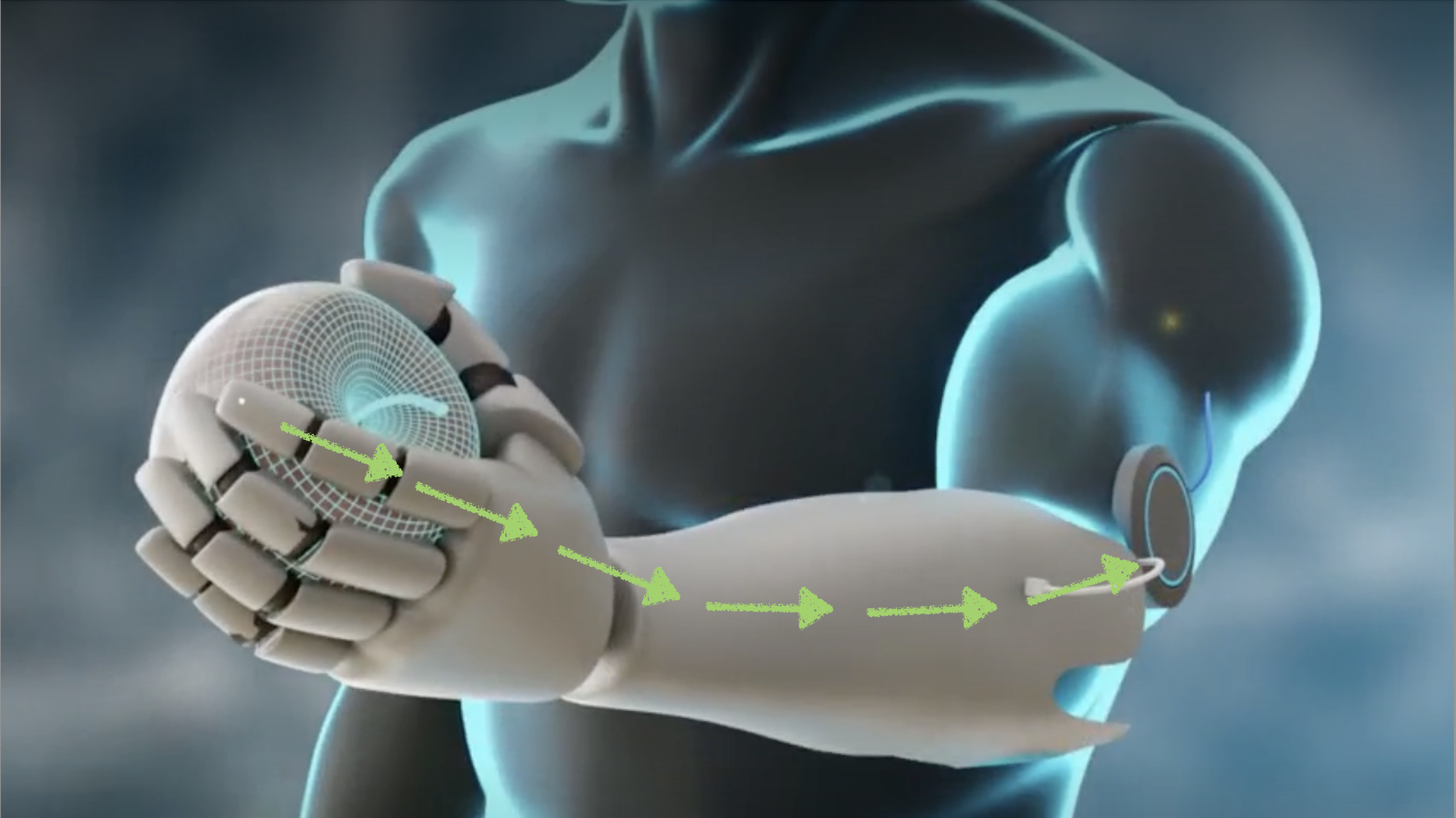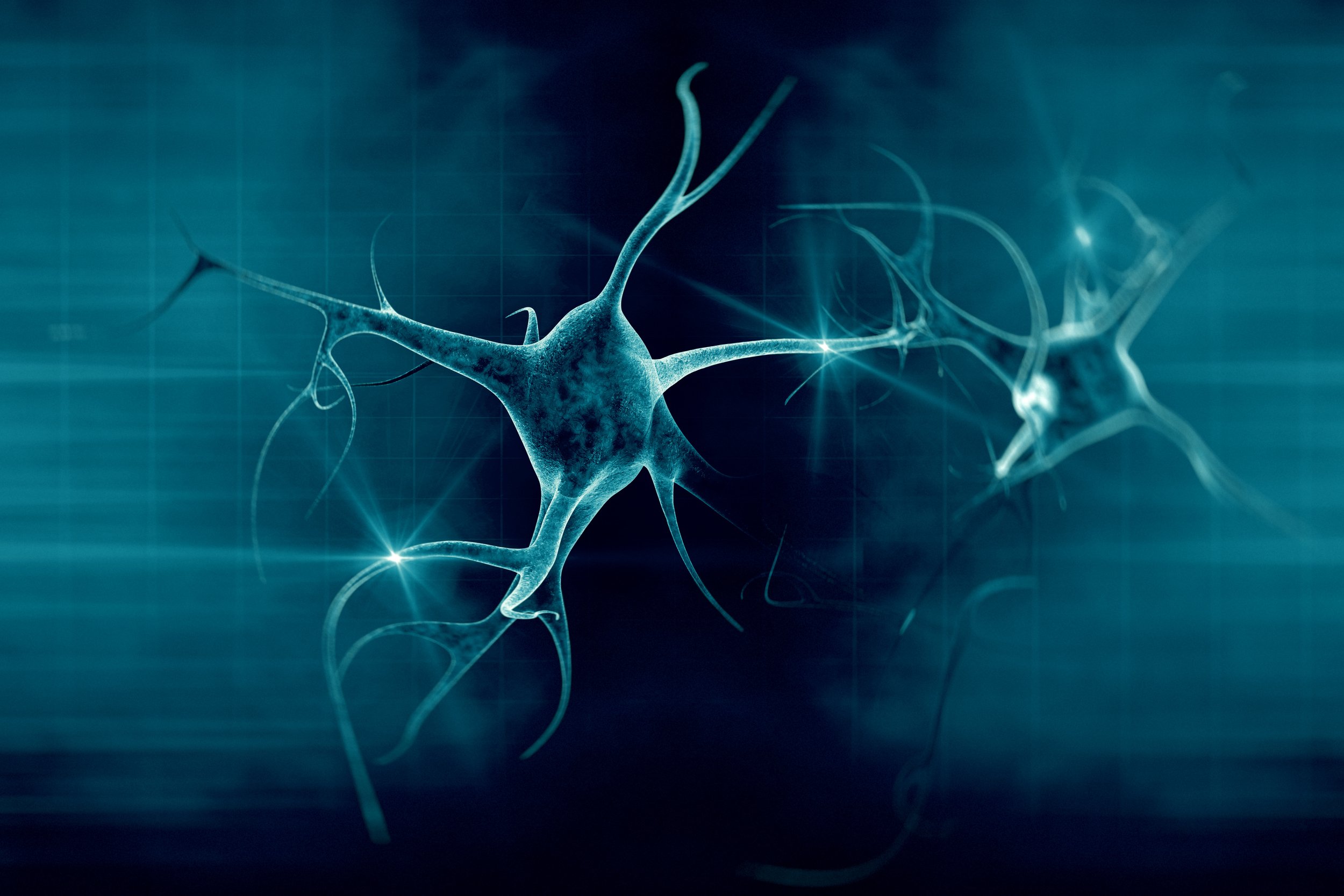Imagine a robotic limb that is so responsive and intuitive, you forget it’s not your biological hand.
We designed a Universal Neural Interface that makes this possible.
How it works
Just like a computer needs a Basic Input Output System to broker communication between all connected devices (e.g., keyboard, mouse, monitor), a person with limb loss or limb difference needs a Biologic Input Output System to broker communication between the brain and the connected robotic limb.
Biologic Input
An electrode array is implanted into the peripheral nerve bundle, gathering nerve signals sent from the brain to the intended area of the body. Electrode wires transport those nerve signals to our Controller.
Kinematic Output
Using an artificial intelligence / machine learning model, our Controller translates those nerve signals into movement for the attached robotic limb.
Sensation Input
Sensors located in the robotic limb send touch sensations back to our Controller.
Biologic Output
Our Controller returns nerve signals to the brain, providing necessary sensory feedback.
Watch it all in action
Combining cutting-edge technologies
The design of our Universal Neural Interface is inspired by pioneering technologies across various industries.
Neurotechnology
We use electrodes to connect our device to the neural system to send and receive messages that allow natural movement
Artificial Intelligence / Machine Learning
Our Controller uses AI / ML to translate nerve signals to and from the brain
Robotics
Our Universal Neural Interface is a real-time connection between the brain and advanced robotics
Our Universal Neural Interface
Intuitive Control through the PNS
Our Interface taps into the peripheral nervous system (PNS) and is designed to direct two-way communication with the brain and robotic limb, ultimately moving as fast, accurately and intuitively as a biological limb.
Fast: The robotic limb can receive and process instructions for movement as fast as a biological limb.
Accurate: The robotic limb follows directions from the brain, making continuous control movements such as opening, closing, shifting robotic hand from left to right, and stopping or starting at any point.
Intuitive movement: The robotic limb combines fine dexterous movement with touch so it feels like a biological limb.
“We are communicating with the body in the body’s natural language.”
-Jacob A. George, Ph.D., Assistant Professor, University of Utah










